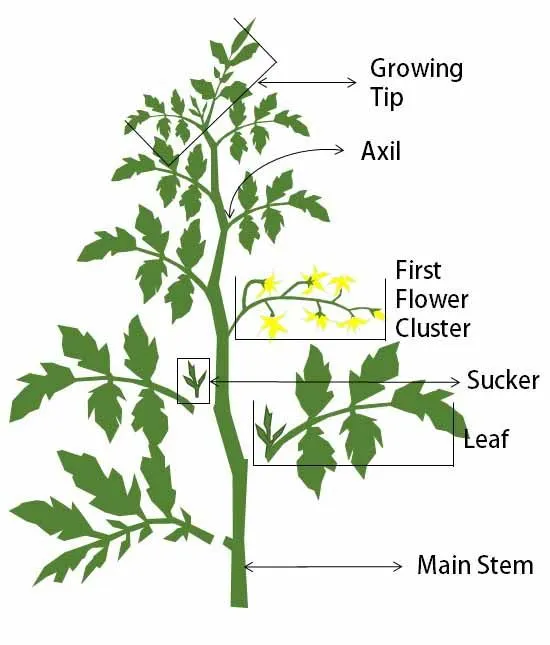Growing tomatoes can be incredibly rewarding, but achieving a thriving harvest requires more than just planting and watering. Proper pruning is key to the health and productivity of your tomato plants. This guide covers the essentials of tomato pruning, including why it matters, when to do it, and how to execute it effectively.
Why Prune Your Tomatoes?
Pruning is crucial for several reasons:
- Improves Air Circulation: Proper pruning opens up the plant’s structure, enhancing airflow and reducing the risk of fungal diseases.
- Enhances Sunlight Exposure: Removing excess leaves allows sunlight to reach the fruits and lower parts of the plant, vital for growth and ripening.
- Directs Energy to Fruit Production: By cutting back unnecessary shoots, the plant can focus on producing larger, healthier fruits.
Preparing to Prune
Before you begin, gather the right tools:
- Pruning Shears: Use clean, sharp shears or scissors for clean cuts.
- Disinfect Tools: Always disinfect your tools before and after pruning to prevent disease spread.
Step 1: Identify Your Tomato Type
- Determinate Tomatoes: These plants grow to a certain height and produce all their fruit at once. Pruning should be minimal, mainly focusing on removing suckers below the first flower cluster.
- Indeterminate Tomatoes: These continue growing and producing throughout the season and require regular pruning to manage size and energy distribution.
Step 2: Pruning Basics
- Remove Suckers: Suckers grow in the leaf axils. For indeterminate varieties, remove suckers below the first fruit cluster. For determinate types, leave a few for shade.
- Prune Lower Leaves: Cut off leaves near the ground to prevent soil-borne diseases, especially after fruit has set.
- Thin Out Leaves: Remove some middle leaves to boost air circulation and sunlight penetration.
Step 3: Advanced Pruning Techniques
- Topping Off: About a month before the first frost, cut off the top of indeterminate plants to redirect energy to ripening fruits.
- Missouri Pruning: Instead of removing suckers completely, pinch off just the tips, leaving one or two leaves for continued growth without bushiness.
Step 4: Regular Maintenance
- Monitor Your Plants: Check regularly and prune as needed, preferably in the morning when plants are dry to minimize disease risk.
- Support Your Plants: Use stakes, cages, or trellises to support larger plants, especially as they bear fruit.
Step 5: Post-Pruning Care
- Watering: Ensure adequate watering after pruning, targeting the base to prevent wetting the leaves.
- Fertilizing: Use a balanced fertilizer to support growth, particularly after significant pruning.
Conclusion
Pruning tomatoes might seem complicated, but it becomes easier with practice. By following these steps and understanding your plants’ needs, you can cultivate a healthy garden filled with delicious, sun-ripened tomatoes. Happy gardening!
